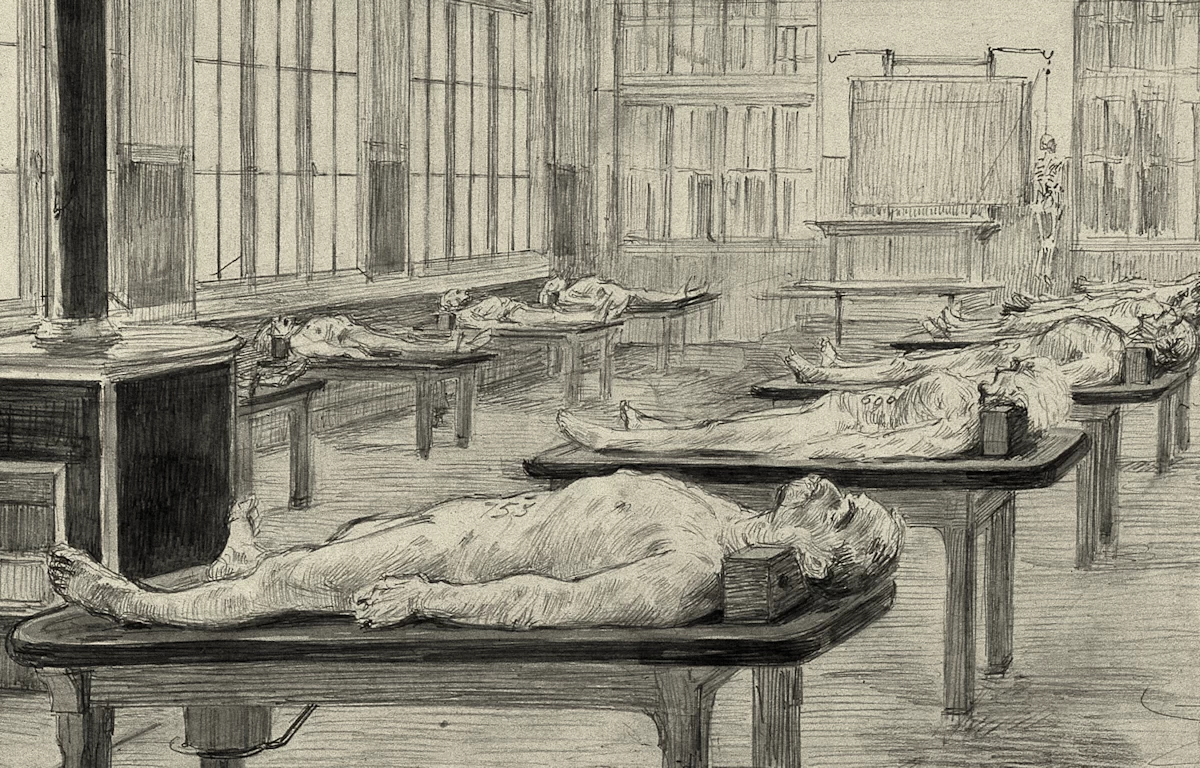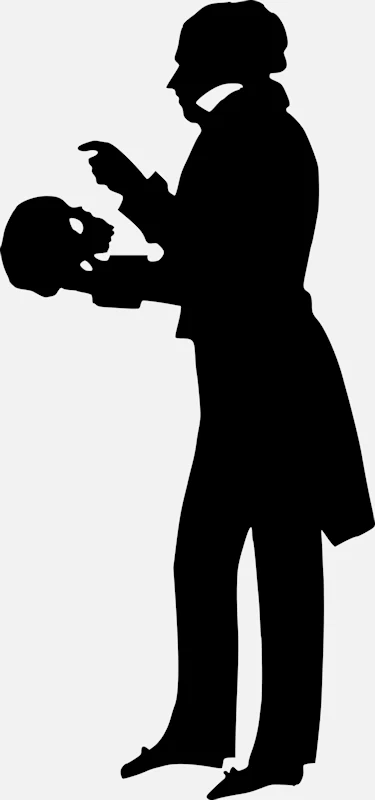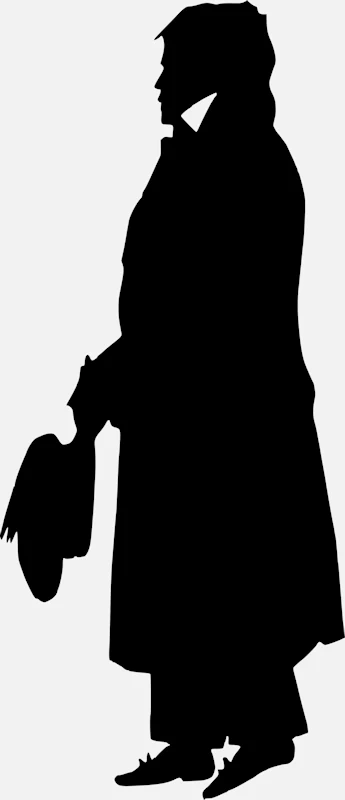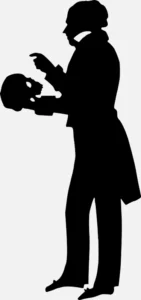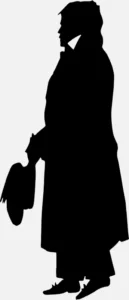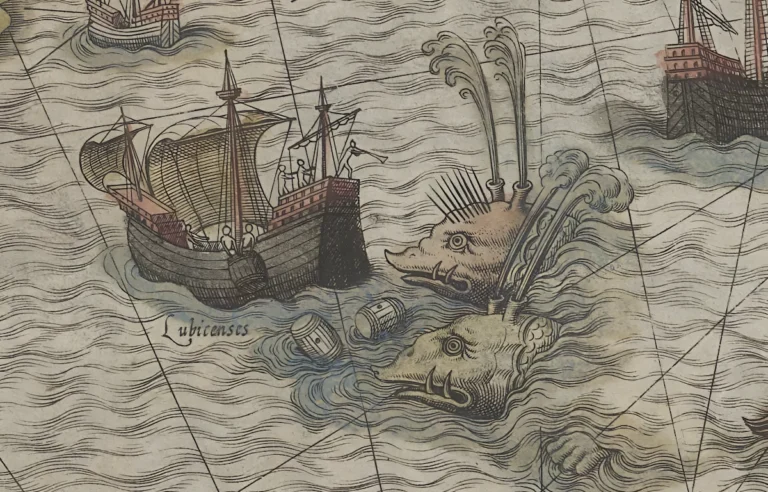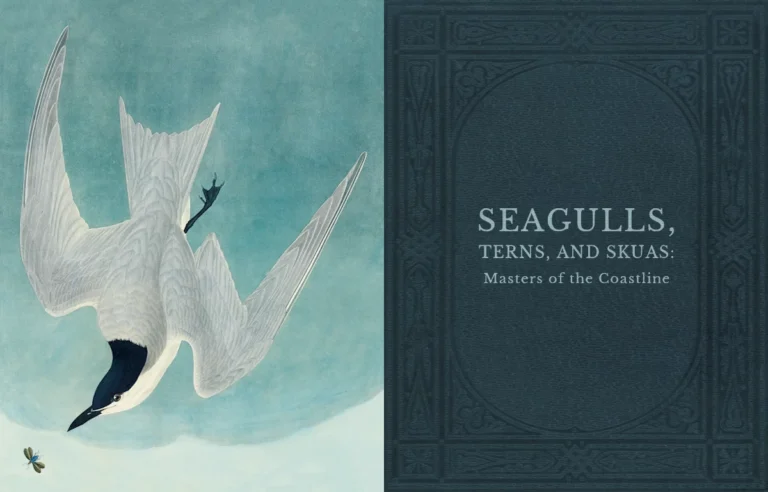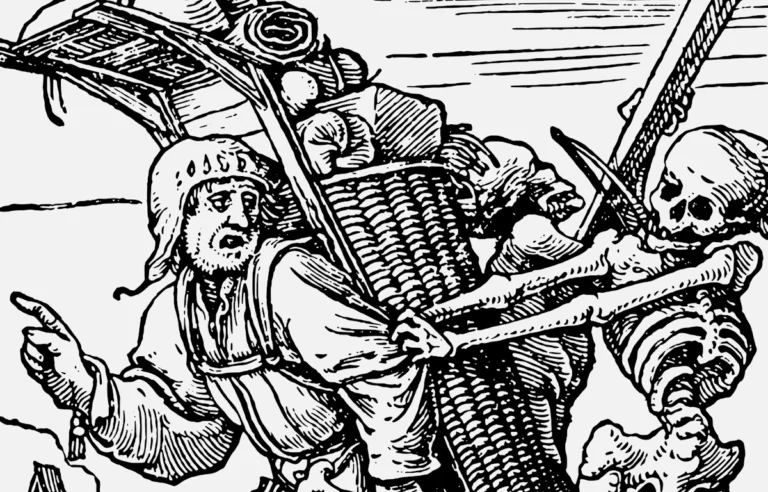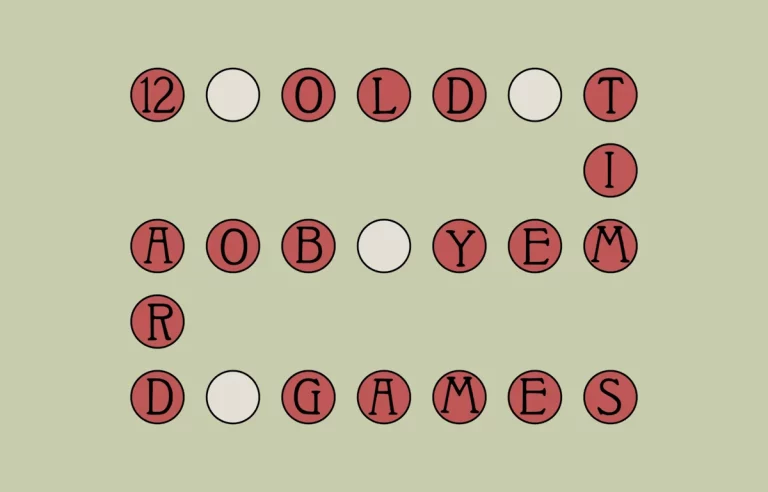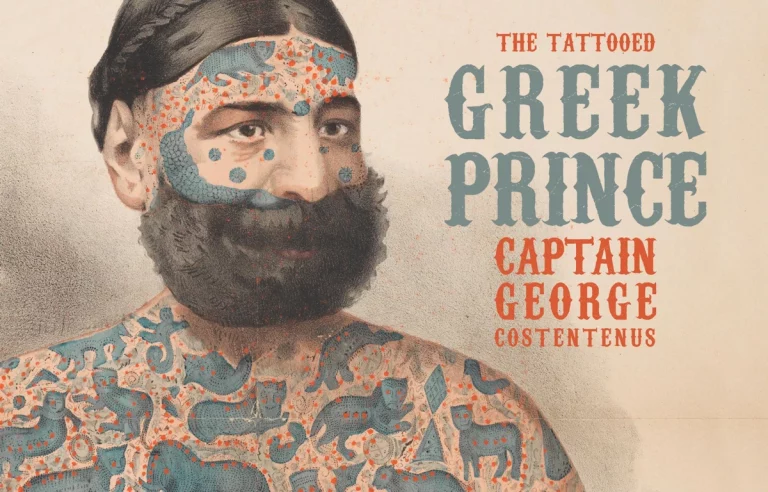The Burke and Hare Murders: Scotland's Darkest Chapter
In the early 19th century, Edinburgh was a city where brilliant medical discoveries were being made. It was also where two men, William Burke and William Hare, decided to make their own “contribution” to medical science—by killing people. The Burke and Hare murders are now infamous, and they sent shockwaves through Scotland. Their crimes not only exposed a horrifying side to the medical world but also forced changes in how the law handled human bodies. This tale of greed, murder, and betrayal shows how even the brightest minds can be blinded by money.
Edinburgh: A City of Medicine and Crime
Let’s set the scene: Edinburgh in the early 1800s. This was a city buzzing with excitement over medical advances. Its universities were top-notch, attracting students eager to learn about anatomy. The problem? To study human anatomy, you need actual human bodies. But here’s the twist—these bodies were hard to come by. Only criminals who’d been executed, people who died in prison, or unclaimed corpses could legally be used for medical research. Needless to say, that didn’t exactly provide an endless supply.
The scarcity of corpses led to an underground trade that was both creepy and dangerous—body-snatching. These “resurrectionists” (fancy term for grave robbers) would dig up freshly buried bodies and sell them to medical schools. Not exactly the most ethical job in the world, but the demand for bodies was so high that people were willing to risk their necks for a quick payday.
A “Brilliant” Idea: The Birth of a Grim Business
Enter William Burke and William Hare, two Irish immigrants living in Edinburgh. They weren’t exactly model citizens. Both were scraping by, doing odd jobs. Life wasn’t glamorous, but things took a gruesome turn in late 1827. When one of Hare’s lodgers, an elderly man named Donald, died without paying his rent, Hare saw a twisted opportunity. Instead of giving Donald a proper burial, Hare and Burke decided to sell his body to a local anatomist, Dr. Robert Knox, who was always in the market for a fresh corpse. They made a tidy sum and realized they had stumbled onto a goldmine.
But here’s where things get really dark. Instead of waiting around for more people to die naturally, they decided to take matters into their own hands. Murder, it turns out, was quicker than waiting for nature to take its course. And so, the killings began.
How Burke and Hare Operated
Now, you might think they had some complicated, cunning plan for their murders, but no. Their method was shockingly simple and chillingly effective. They targeted people who were vulnerable—those on the fringes of society, like the elderly, sick, or homeless, who wouldn’t be missed. They would lure their victims to Hare’s lodging house, often with promises of food or a drink.
Once inside, they’d get their victim drunk or incapacitated and then suffocate them—usually by pressing a pillow over their face or sitting on their chest. This method, later called “burking,” left no obvious marks, making it difficult to tell that foul play had occurred. Afterward, they’d deliver the body to Dr. Knox, who, without asking too many questions, paid them handsomely for their fresh “specimens.” And just like that, they were in business.
The Victims: A Chilling Roll Call
Over the course of ten months, Burke and Hare killed at least 16 people, although some suspect the real number could be higher. One of their first known victims was Abigail Simpson, an elderly woman who had the misfortune of crossing paths with the duo. Lured with alcohol, she was murdered and promptly sold to Knox.
Another victim was Mary Paterson, a young woman who was well-known in the community for her striking beauty. Even in death, her beauty caused a stir, as medical students reportedly marveled at how fresh her body looked, oblivious to the fact that she had been murdered just hours before. Then there was “Daft Jamie,” a mentally disabled teenager beloved by locals. His disappearance sparked real concern, but unfortunately, not in time to stop Burke and Hare from adding him to their list of victims.
What’s especially disturbing is how easily they got away with it for so long. Their victims were often from the poorest sections of society—people who didn’t have family or friends to raise the alarm when they went missing. This allowed the pair to kill again and again without arousing suspicion.
The Beginning of the End
But, as we all know, crime sprees don’t last forever. Their downfall came with the murder of Margaret Docherty in November 1828. This time, they were sloppy. Other lodgers staying at Hare’s house heard suspicious noises, and when they discovered Docherty’s body hidden under a bed, they called the police. Burke and Hare’s reign of terror was finally over.
When the police began investigating, they initially didn’t have much solid evidence. But Hare quickly realized that loyalty wasn’t going to get him anywhere. To save his own skin, he struck a deal with the authorities: he would testify against Burke in exchange for immunity. It worked. Hare spilled the beans on everything, providing all the grisly details of their crimes.
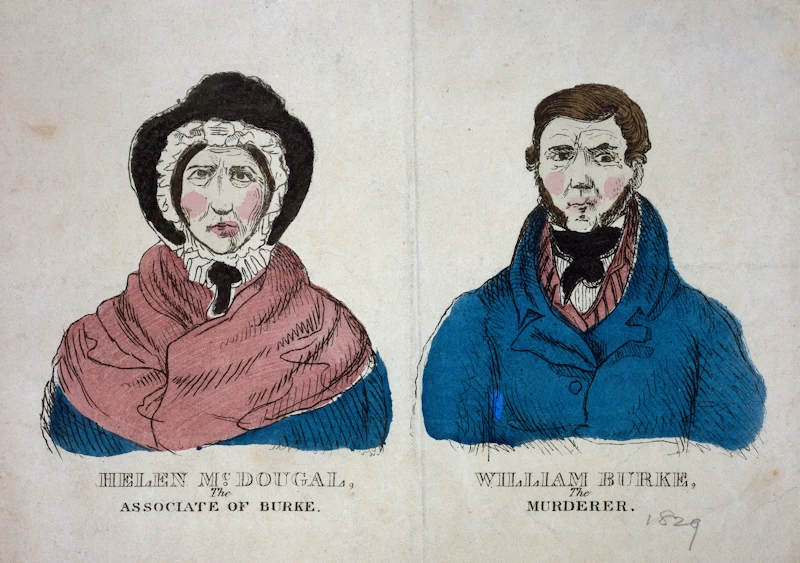
anonymous (1829)
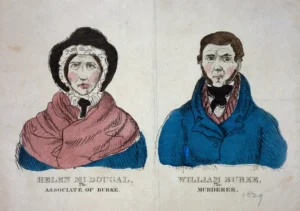
anonymous (1829)
The Trial: A Sensation Grips Scotland
The trial of William Burke and his partner, Helen McDougal, was a media sensation. Beginning on Christmas Eve in 1828, the courtroom was packed with people eager to hear about the horrifying murders. Thanks to Hare’s testimony, Burke was found guilty with little hesitation. McDougal, however, was acquitted due to a lack of evidence, although she didn’t escape public scorn. Everywhere she went, she faced insults and even threats for her involvement.
Burke, however, wasn’t so lucky. On Christmas Day, just hours after the trial concluded, he was sentenced to hang.
The Execution: Poetic Justice?
Burke met his end on January 28, 1829, in front of a massive crowd of around 20,000 people. His execution was a public spectacle—almost a form of poetic justice, considering how many people had unknowingly attended anatomy lectures featuring his victims. But the story doesn’t end there. In a morbid twist of fate, Burke’s body was donated to science after his death. Talk about irony! His skeleton is still on display today at the Anatomical Museum of the University of Edinburgh. You can even see his death mask at the Surgeons’ Hall Museum.
As for William Hare, his fate remains somewhat of a mystery. After testifying against Burke, he vanished. Some rumors claim he was blinded by an angry mob, while others say he lived out the rest of his days as a beggar. Either way, Hare avoided punishment and faded into obscurity.
Dr. Robert Knox: The Man Who Turned a Blind Eye
And what about Dr. Robert Knox, the anatomist who had been buying these bodies? Many believed that Knox had to have known something was off, but he was never charged. Still, the scandal damaged his career. Although he wasn’t directly implicated, Knox’s reputation took a nosedive. He moved to London and continued his work, but the shadow of the Burke and Hare murders followed him for the rest of his life.
The Anatomy Act of 1832: Change at Last
If there’s one silver lining to this grim tale, it’s the changes that followed. The Burke and Hare murders highlighted a serious issue with the way medical schools obtained bodies for study. Public outrage over the killings led to the Anatomy Act of 1832, which allowed unclaimed bodies from hospitals and workhouses to be used for medical research legally. This law helped to put an end to body-snatching and ensured that medical students could study anatomy in a more ethical (and less terrifying) way.
The Anatomy Act didn’t just change how medical schools operated—it also helped to restore the public’s trust in the medical profession. Finally, there was a legal way for bodies to be used for education, without resorting to murder.
The Legacy of Burke and Hare
Even though Burke and Hare’s crimes were horrifying, their story has become a part of popular culture. Plays, books, and movies have all been inspired by their gruesome deeds. And let’s not forget that the term “burking” came directly from their method of suffocating victims without leaving any marks. Talk about leaving a lasting impact!
The Burke and Hare murders are a chilling reminder of how greed can lead people to commit the most unimaginable acts. But their story also serves as a cautionary tale about the importance of ethics in medicine and law. If anything, their crimes helped ensure that future generations wouldn’t have to live in fear of becoming the next victim of a body-snatcher.
Conclusion: A Dark Chapter That Changed Everything
The story of Burke and Hare is one of Edinburgh’s darkest chapters. It’s a tale of murder, betrayal, and greed, but also of change. The Anatomy Act of 1832 was a direct response to the horrors of their crimes, making sure that future medical students wouldn’t have to rely on such gruesome sources for their studies.
So, next time you think of Edinburgh, remember the story of Burke and Hare. It’s a grim reminder that sometimes the real monsters aren’t lurking in dark alleys—they might just be the people living next door. And while their crimes will forever stain the history of the city, the changes they sparked continue to shape the way we handle medical ethics today.
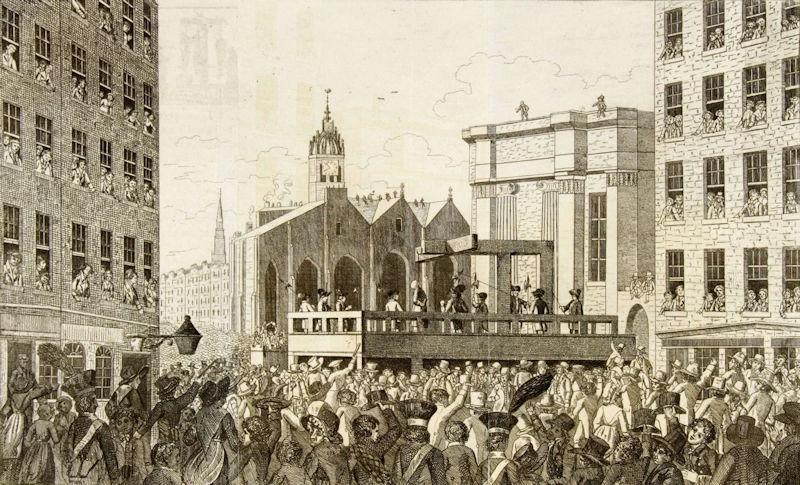
William Roughead (1921)
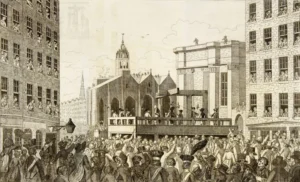
William Roughead (1921)


